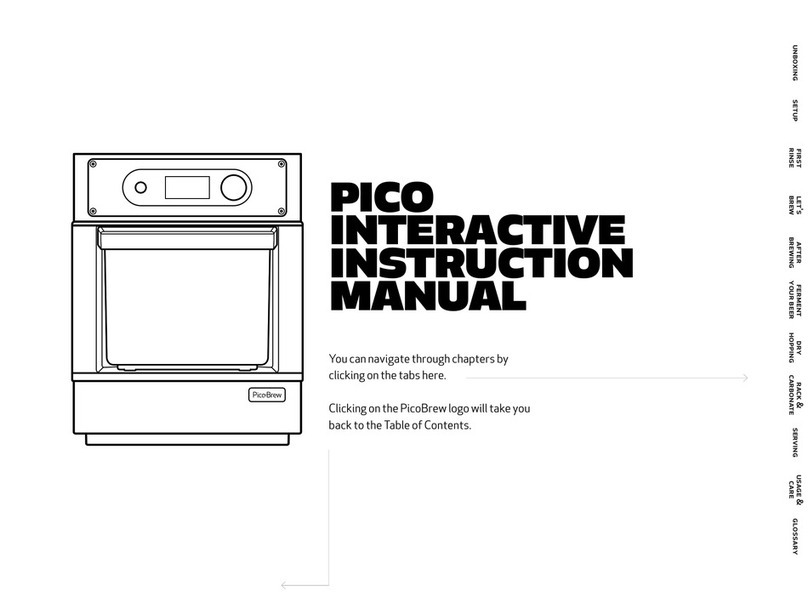SECTION 2: SETTING UP YOUR ZYMATIC®- CONTINUED
18 19
2.3 Initial Rinse
Before you start your first brew, you need to run a quick rinse
cycle using an empty bucket, your keg, and the cleaning wand.
Step filter set-up:
1. Place the smaller of the mash screens into the mash
compartment, so that it rests on the bottom ledge of
the step filter. This is the false bottom that the grain
will sit on.
2. Place the adjunct screen on the other side of the step
filter (the adjunct compartment), also resting on the
bottom ledge.
3. Place the lid on top of the step filter, ensuring that the
holes are aligned correctly. The indented (beveled) side
of the center hole should be facing up.
Slide step filter into Zymatic. There should be a little
resistance as the drain slides into place and the step filter
presses against the back of the Zymatic. Do not excessively
force step filter into drain. The step filter will stick out of the
machine by about an inch to allow for easy removal. If you
are having issues sliding step filter into place please contact
support@picobrew.com for assistance.
Switch on Zymatic. Scroll and click through menus. Follow the
on screen instructions if you are using WiFi.
Fill your keg with approximately 1.5 gallons of clean, hot tap
water. Place the keg either on the floor or on the counter next
to your Zymatic.
Connecting your keg to the Zymatic: Connect the black ball
lock to the keg post labeled OUT, and the gray ball lock to the
keg post labeled IN. Lift the outer ring of the ball lock, place it
on the appropriate keg post, let go of the outer ring and press
down firmly. The ball lock will click when it fits into place.
In the same manner, attach a cleaning wand to the GRAY ball
lock. Allow the gray hose to sit in an empty bucket.
1
4
5
2
3




























